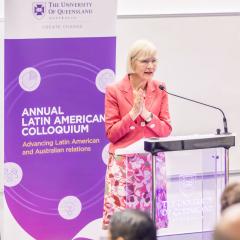Researchers from the University of Queensland’s Sustainable Minerals Institute (SMI) and the University of Geneva (UNIGE) are exploring ore-sand as a sustainable source of sand that could significantly reduce the volume of waste produced by mining.
Ore-sand is an alternative construction material produced from mineral ores.
SMI development minerals program leader Professor Daniel Franks said his team’s research presents an opportunity to address two global sustainability challenges simultaneously.
“Sand is one of the world’s most exploited natural resources and its extraction from rivers and nearshore environments poses a sustainability problem that will only get worse,” he said.
Sand is used for applications ranging from concrete and asphalt to glass making and manufacturing of silicon chips for electronic devices, and over the past two decades, demand has tripled primarily due to urbanisation and population growth in Asia and Africa.
“At the same time, the world’s largest stream of waste – mineral waste from the mining of metal ores – might provide a solution to this challenge with the majority often comprised of sand-like materials,” Franks said.
“Separating and repurposing these sand-like materials before they are added to the waste stream would not only significantly reduce the volume of waste being generated but could also create a responsible source of sand.
“There are known options for adjusting mining and processing operations to recover ore-sand, and new innovations, such as coarse particle flotation, may widen the possibilities supported by incentives for uptake.”
The 12-month project is specifically investigating sand produced from iron ore mining, pioneered by Vale in Brazil and independently sampled by the research team.
“Developing countries have fewer options for using recycled aggregate materials, given their more recent infrastructure. However, many of these countries have mining operations which can generate ore-sand as a by-product,” UNIGE Professor Pascal Peduzzi said.
The final report and findings from the project are expected in early 2022.



